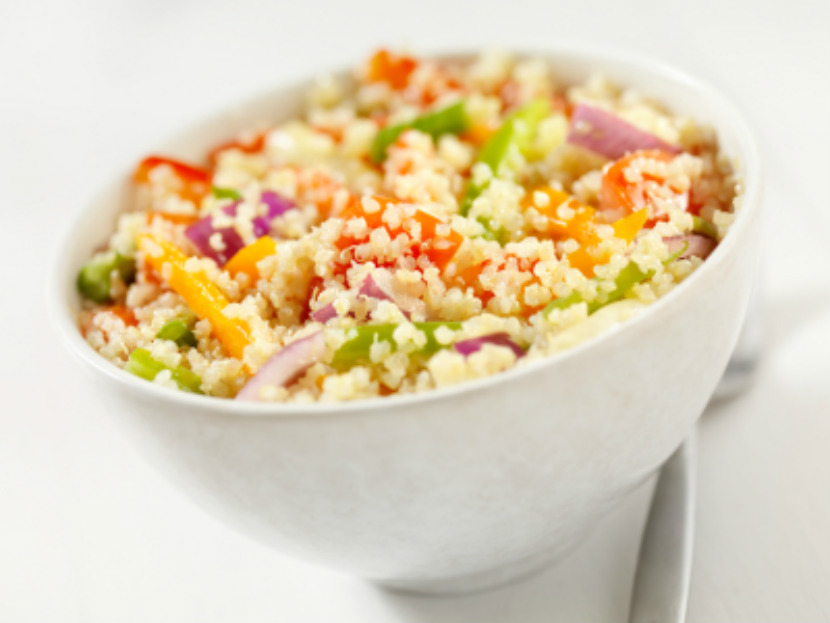
A vegan is a type of vegetarian that avoids all animal products. This means that a vegan does not eat meat, milk, dairy products or eggs. Many vegans also will not wear or use products that are made from animals. If you are thinking about being vegan or want to eat less foods from animal sources, read on to learn more.
What is a vegan diet?
If lentil soup and bean burritos are some of your favourite foods, you already enjoy some vegan meals. The vegan diet can be nutritious, exciting and tasty. It includes grains, vegetables, fruit, nuts, seeds and legumes. Vegans avoid all animal products such as:
-
Meat
-
Poultry
-
Fish
-
Seafood
-
Dairy
-
Eggs
-
Honey
-
Gelatin
Do you know why vegans don’t eat honey?
Vegans avoid honey because it is produced by bees and is an animal-based product. Instead of honey, vegans can use sweeteners that come from trees and plants, such as maple syrup.
Do you know why vegans don’t eat gelatin?
Gelatin is also an animal-based product. It is made from the boiled bones, skins and tendons of animals. It is found in Jell-o and gummy candies. A vegan alternative is agar-agar, which is made from seaweed.
A well-planned vegan eating pattern is healthy
Anyone can follow a vegan diet – from children to teens to older adults. It’s even healthy for pregnant or nursing mothers. A well-planned vegan diet is high in fibre, vitamins and antioxidants. Plus, it’s low in saturated fat and cholesterol. This healthy combination helps protect against chronic diseases.
Vegans have lower rates of heart disease, diabetes and certain types of cancer than non-vegans. Vegans also have lower blood pressure levels than both meat-eaters and vegetarians and are less likely to be overweight.
Getting enough essential nutrients as a vegan
A healthy vegan diet should include a variety of foods to make sure all nutrient needs are met. This requires some planning. Vegans avoid meat, which is rich in vitamin B12, iron and zinc. They also avoid dairy, which is high in calcium and vitamin D. It is important for vegans to find other sources for these nutrients. Speak to your doctor, healthcare provider or dietitian about a vegan eating plan.
This chart shows some of the nutrients and common food sources that require planning if you follow a vegan diet.
|
Nutrient |
|
Food Sources |
|
|
Vitamin B12 |
|
Meat substitutes like soy burgers or TVP (textured vegetable protein). Fortified beverages, like soy or rice drinks Nutritional yeast |
|
|
Iron |
|
Dark leafy greens Legumes, like black beans, dhal, chickpeas Dried fruit Breakfast cereals, flour Blackstrap molasses |
|
|
Zinc |
|
Whole grains, like wild rice Legumes Seeds |
|
|
Calcium |
|
Dark leafy greens Fortified beverages like soy or rice drinks Almonds Legumes |
|
|
Vitamin D |
|
Soft margarine Fortified beverages (like soy beverage or orange juice) |
|
|
Omega 3 fatty acids |
|
Canola oil Soybean oil, soybeans Ground Flax seeds, flax seed oil Walnuts Tofu Fortified soy beverages |
|
It’s important to read the Nutrition Facts table and ingredients list to know if a fortified food has the nutrients you need. Watch these videos for help with nutrition labelling.
Vegan on-the-go
Restaurant menus may be a little tricky when you first start a vegan diet. Dishes that sound vegetarian or vegan may be made with animal foods. For example, some restaurants prepare vegetable soup with chicken stock, make pasta with eggs, and prepare Asian vegetable dishes with oyster or fish sauce. You may find that you often have to ask about ingredients.
But there are many things that vegans can enjoy in restaurants! Great options include chickpea curry, bean burritos, tofu fajitas, falafel, pasta and stir-fries. Of course, the best way to know what’s in your food is to cook at home. That way you can control the food choices and nutrition.
Bottom line:
Whether you make the choice to become full-time vegan or simply choose to eat meat-free meals more often, vegan food is nutritious and delicious. The first step is to learn what nutrients you need and where to find them. Connect with a dietitian to make healthy choices that are right for you.
You may also be interested in:
Four steps to a balanced vegan eating pattern
What you need to know about a vegetarian eating plan
What you need to know to raise a healthy vegetarian child
Last Update – October 13, 2020